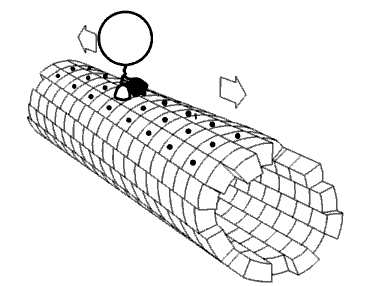
Wolbachia pipientis grows in Saccharomyces cerevisiae evoking early death of the host and deregulation of mitochondrial metabolism
Sign Up to like & getrecommendations! Published in 2019 at "MicrobiologyOpen"
DOI: 10.1002/mbo3.675
Abstract: Wolbachia sp. has colonized over 70% of insect species, successfully manipulating host fertility, protein expression, lifespan, and metabolism. Understanding and engineering the biochemistry and physiology of Wolbachia holds great promise for insect vector‐borne disease eradication.… read more here.
Keywords: saccharomyces cerevisiae; metabolism; wolbachia pipientis; wolbachia ... See more keywords

Wolbachia pipientis Colonizes S cerevisiae with High Yields. Effects on the Host
Sign Up to like & getrecommendations! Published in 2019 at "Biophysical Journal"
DOI: 10.1016/j.bpj.2018.11.1756
Abstract: characterize the interplay between tumor cells and angiogenesis, as well as their proliferation, phenotypic transitions, and death. We use this model to predict– early in course of neoadjuvant therapy–the eventual response of the individual patient.… read more here.
Keywords: cerevisiae high; yields effects; wolbachia pipientis; high yields ... See more keywords

Wolbachia pipientis Associated With Tephritid Fruit Fly Pests: From Basic Research to Applications
Sign Up to like & getrecommendations! Published in 2020 at "Frontiers in Microbiology"
DOI: 10.3389/fmicb.2020.01080
Abstract: Members of the true fruit flies (family Tephritidae) are among the most serious agricultural pests worldwide, whose control and management demands large and costly international efforts. The need for cost-effective and environmentally friendly integrated pest… read more here.
Keywords: tephritid; research; fruit; wolbachia pipientis ... See more keywords

The Intracellular Symbiont Wolbachia pipientis Enhances Recombination in a Dose-Dependent Manner
Sign Up to like & getrecommendations! Published in 2020 at "Insects"
DOI: 10.3390/insects11050284
Abstract: Wolbachia pipientis is an intracellular alphaproteobacterium that infects 40%–60% of insect species and is well known for host reproductive manipulations. Although Wolbachia are primarily maternally transmitted, evidence of horizontal transmission can be found in incongruent… read more here.
Keywords: wolbachia pipientis; wolbachia; intracellular symbiont; dose dependent ... See more keywords